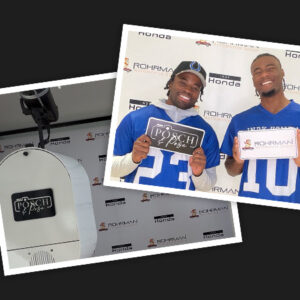Why your brand might feel “off” — and what to do about it
As a designer, it doesn’t take me long to know when something isn’t quite right. In fact, within the first five seconds of looking at a brand—whether it’s a website, a flyer, or a social post—I can usually spot at least one design issue that’s hurting its effectiveness.
Many business owners and marketers can sense when their branding feels “off,” but they’re not always sure why. It’s easy to assume it’s a logo issue or that something just needs to be “updated.” But in reality, it often comes down to a few common design mistakes that are working against your message.
Below are some of the most frequent design red flags I see—and how to avoid them.
1. Everything is bold
When everything is emphasized, nothing is. Overusing bold text is a common mistake that diminishes impact instead of enhancing it. Bold formatting should be used purposefully to draw attention to key points—not applied across the board. If your design feels heavy or hard to read, it might be because your content is visually shouting instead of guiding.
2. No visual hierarchy
Visual hierarchy is the structure that tells the viewer where to look first, what’s most important, and how to process information. Without it, your design becomes a flat wall of content—overwhelming and hard to follow. Effective hierarchy uses typography (like font size, weight, and spacing), color, and layout to organize content in a way that makes the message clear and accessible. If people are confused or miss your main message, this is often the reason.
3. Inconsistent spacing
Design is just as much about the space between things as it is about the things themselves. Uneven margins, crammed elements, and inconsistent padding create tension and clutter. Good spacing gives your content room to breathe and creates a feeling of polish and professionalism. It might not be the first thing a casual viewer notices—but they’ll definitely feel the difference between a clean layout and one that’s visually disorganized.
4. Color overload
Colors are a powerful branding tool—but only when used strategically. Too many colors, or poorly chosen combinations, can dilute your brand’s message and make your design feel chaotic. A strong visual identity typically includes a primary color palette and a few secondary accents, used with intention and consistency. Random or excessive color use can confuse your audience and make your brand look unfocused.
5. A logo that tries to do too much
Your logo doesn’t have to (and shouldn’t) tell your entire brand story. Logos that are packed with too many elements—text, icons, gradients, taglines—often fail at what a logo is meant to do: be simple, memorable, and scalable. If your logo doesn’t work in black and white, doesn’t fit well on small screens, or looks cluttered at a glance, it’s likely overdesigned.
Why These Mistakes Matter
Design isn’t just decoration—it’s communication. It plays a critical role in how your brand is perceived, how your message is received, and whether people take the action you want them to take. When design is clean, clear, and intentional, it builds trust. When it’s messy or confusing, people tune out—even if they don’t know why.
These red flags are common, but they’re also fixable. Sometimes it’s a quick layout adjustment. Other times, it’s a matter of revisiting your brand foundation to ensure you have the right visual strategy in place.
If you’ve been second-guessing your brand or wondering why your materials don’t have the impact you hoped for, these design issues could be the root cause.
Need help identifying what’s working—and what’s not?
I offer design consultations to help businesses like yours spot and solve these problems. Whether you’re looking to clean up a single piece or evaluate your entire brand presence, I’m here to help bring clarity and balance back to your visuals.
Let’s talk about how we can make your brand work harder—and look better—starting now.







